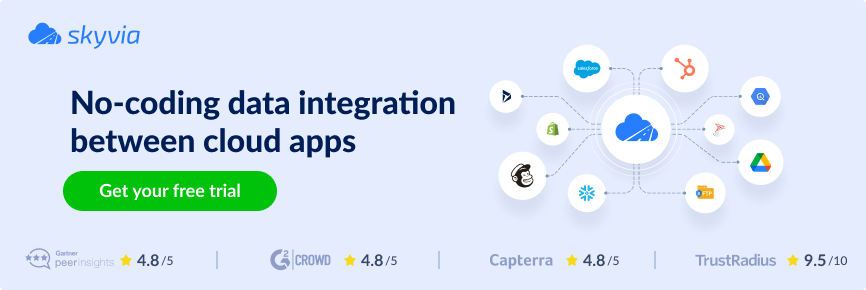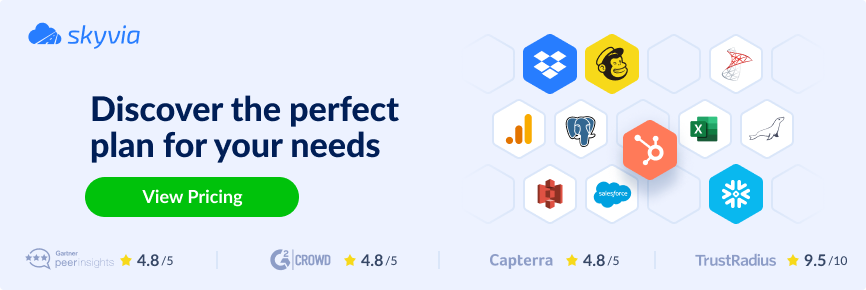The healthcare industry requires fast reactions and instant decision-making. To make well-informed choices, medical workers need to access relevant data. However, medical information may be stored in fragmented systems, including legacy and custom-built ones, and bringing it all together is the first and highly complex challenge. This is where healthcare data integration comes in, providing clinicians with the information they need.
In this article, we thoroughly explore the concept of data movement in clinical areas. We also provide some tips for implementing a high-performing integration system. And finally, we focus on the obstacles related to data exchange between medical systems.
Table of Contents
- What Is Healthcare Data Integration?
- Key Benefits of Healthcare Data Integration
- Steps to Implement Healthcare Data Integration
- Skyvia’s Role in Healthcare Data Integration
- Use Case Examples of Healthcare Data Integration
- Future Trends in Healthcare Data Integration
- Conclusion
- FAQs
What Is Healthcare Data Integration?
Healthcare data integration stands for collecting and blending data from different medical systems, such as:
- EHR (Electronic Health Records) systems with individual patient records.
- Broader health information systems (HIS).
- Medical devices.
The primary purpose of data integration is to merge information from multiple systems into a unified dataset, also known as a single source of truth (SSOT). In practice, this means sending data into databases or cloud data warehouses, from which it’s later extracted into BI and analytics tools for reporting. That way, medical workers can obtain a holistic view of each patient in real time.
Data integration also supports interoperability, enabling effective communication between different systems through data standardization. Moreover, it facilitates medical data analytics, which helps to drive public health patterns.
Key Benefits of Healthcare Data Integration
Data consolidation also delivers an enormous potential to change patient care for the better. It refines numerous processes across different healthcare organizations, such as hospitals, laboratories, urgent care spots, etc. Here are some other tangible benefits that come with data integration.
- Improved Patient Care. Since data is aggregated in one place, clinicians have access to each patient’s medical history. Lab analysis results, prescriptions, previous disease history, and other details enable doctors to design comprehensive treatment plans.
- Streamlined Administrative Processes. Data integration takes the weight off administrative personnel. It reduces manual data entry of healthcare records into multiple systems. As a result, the likelihood of human error is minimized, and the data inaccuracies in medical registries are nearly eliminated.
- Enhanced Decision-Making and Analytics. Keeping all data in a single system (database, data warehouse, etc.) assures a strong foundation for data analysis. That way, clinicians can identify public health trends and manage medical programs more efficiently. Unified data storage is also a base for predictive analytics. It helps medical workers to anticipate patient needs and manage unwanted risks.
- Principles of a Successful Data Integration System. In fact, it must guarantee data integrity and security with zero leaks and breaches. Other aspects that ensure successful data integration are:
- Standardization
- Interoperability
- Sharing protocols
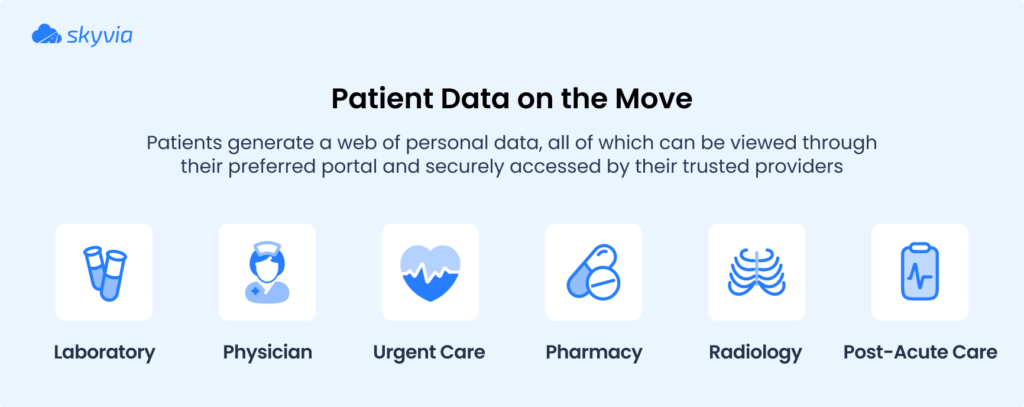
Data Standardization
Data-related standards expose rules for data collection, storage, exchange, and retrieval. They also provide terminology that applies to data in the healthcare sector.
Here are some examples of data-related standards:
- Interchange formats provide standards for electronic data encoding. These standards also include structure types for medical documents.
- Terminology is a set of medical terms and concepts used to describe data elements. It also provides the syntax for explaining relationships among terms and concepts.
- Knowledge representation includes standardized methods for delivering medical literature, clinical guidelines, and other documents.
Data standardization is a fundamental part of data management in any sector of the economy. It enables medical workers to get a clear vision of a patient’s clinical history.
Interoperability between Systems
Interoperability enables dispersed health data systems to communicate and share data. This helps health workers access and utilize regardless of its structure, format, system of origin, etc.
National healthcare systems impose data processing standards on electronic exchange. For instance, the US federal government, together with the Centers for Medicare & Medicaid Services (CMS), have adopted the rules for secure data exchange and interoperability between different sources.
Secure Data Sharing Protocols
Since most healthcare data is often sensitive, it requires enhanced protection and security. As many countries have already adopted data security standards, medical institutions have to strictly follow them. Additionally, they can implement enhanced safety measures and regulations to ensure data privacy and integrity.
Here are some standard practices used to ensure data safety in transit and at rest:
- Develop written policies and procedures for controlling data security and review them regularly.
- Define role-based access levels to data for each employee and set associated permissions.
- Make sure to respect the national regulations on data collection for research purposes.
- Limit physical access to hardware with confidential information only to authorized personnel.
- Apply data encryption mechanisms to send healthcare data to other systems.
Steps to Implement Healthcare Data Integration
Before creating a data pipeline, you need to take some preparatory steps. You’ll first need to audit your current data management systems. Then, explore data integration platforms and current healthcare regulations in your country.
Assess Current Data Management Systems
Observe the actual architecture and infrastructure of your healthcare data management system. To understand whether it’s good or not enough, pay attention to the following factors:
- Real-time data access. Make sure that medical professionals or patients have access to the most recent information.
- Data sharing. See whether medical workers can share their professional insights with others and retrieve information about patients.
- Data security. Make sure that your healthcare data management system implements role-based access control. This includes encryption mechanisms and other expected measures to ensure data security.
- Patient identity privacy. Explore whether a patient can access their account in the system at a guaranteed level.
Ensure Compliance with Healthcare Regulations
The regulations for data access and management may vary from country to country. Here, we review some fundamental ones required for patient data protection.
- HIPAA (Health Insurance Portability and Accountability Act). HIPAA defines strict standards for patient data confidentiality and security. The guidelines provided in this act must be implemented in all healthcare entities.
- HITECH Act (2009). The HITECH Act complements HIPAA with recommendations for patient data protection on the electronic information exchange.
- GDPR (General Data Protection Regulations). GDPR is a set of regulations that imposes strict rules on data protection, including health data. It refers to the citizens of all countries within the European Union (EU). Companies that reside outside the EU but deal with EU citizens need to make their data management systems GDPR-compliant.
- CCPA (California Consumer Privacy Act). CCPA allows California residents to request personal data deletion from healthcare systems.
Choose the Right Data Integration Platform
Select data integration solutions that are compliant with the fundamental regulations mentioned above. Examine how these tools connect to the required healthcare systems. See whether a platform offers real-time data exchange or batch processing with brief update intervals for your data update needs. Then, focus on tools that fit your budget.
Skyvia’s Role in Healthcare Data Integration
Skyvia is a universal cloud data platform designed for various data-related tasks.
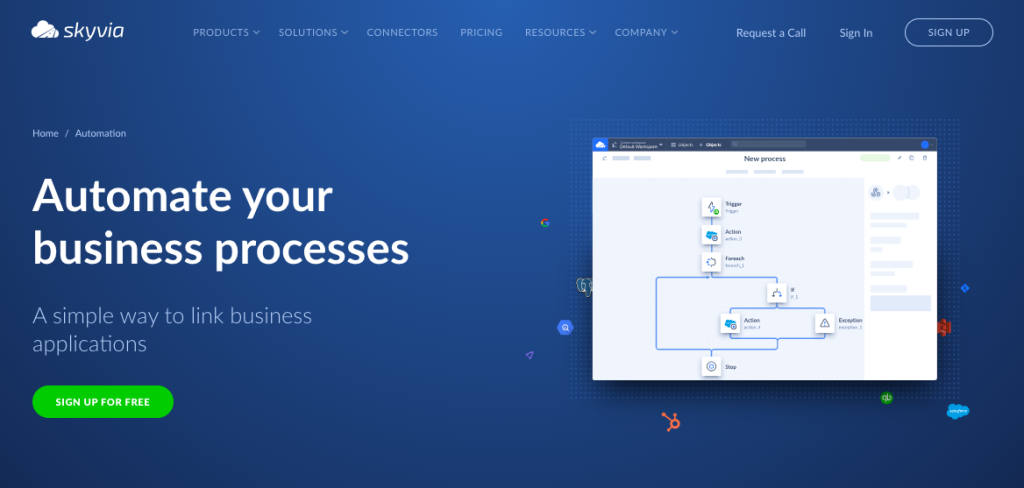
Skyvia’s Data Integration product has a number of tools that enable seamless data flow between different healthcare systems.
- Import is a wizard-based solution suitable for crafting ETL pipelines and Reverse ETL integration scenarios without coding. This solution can be useful for loading heterogeneous data from one system to another.
- Replication is a wizard-based solution suitable for creating ELT pipelines without coding. This solution is good for aggregating data within a database or a data warehouse that comes as an SSOT.
- Data Flow is a powerful visual data pipeline designer that allows you to move data across multiple data sources and build complex multistage transformations. This tool is useful when the integration scenario involves many different systems.
Key benefits of Skyvia:
- Intuitive GUI that makes this tool easy to set up and use.
- Pre-built connectors to over 200 sources.
- Support of ETL, Reverse ETL, and ELT pipelines.
- Powerful data transformation capabilities.
- Detailed logs of errors.
- Email notifications are sent to inform about integration status, limits exceeded, etc.
Use Case Examples of Healthcare Data Integration
Case Study 1. Large Hospital Networks
One of Skyvia’s clients is a global provider of online patient recruitment services. This company handles patient surveys, feasibility studies, and site selection services for clinical trials.
The main challenge of this company was to collect data from dispersed systems. They had to extract data from the backend system, Facebook, CRM system, Excel files, and other sources. Another challenge was associated with preparing data for reporting in Tableau.
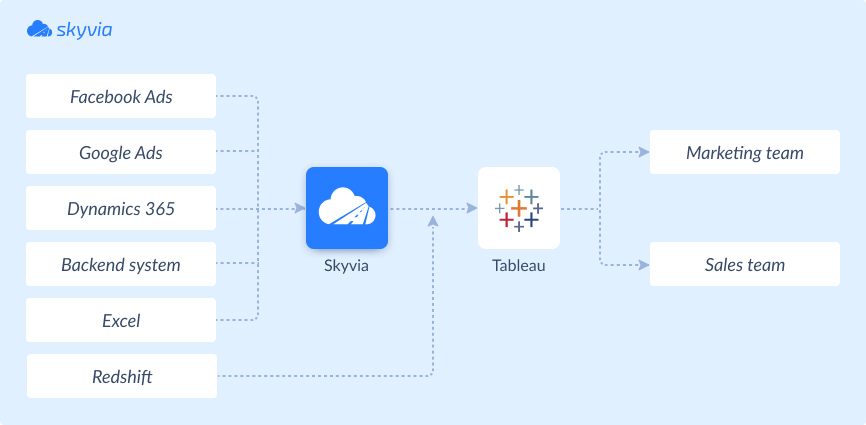
Thanks to Skyvia, our client configured data extraction from all data systems and created a strong base for business intelligence. This company has also reduced resource spending on data operations owing to Skyvia.
Case Study 2. Telehealth Services
Another client of Skyvia is AHCA (American Health Care Association), a non-profit federation of affiliated state health organizations. AHCA was looking for a solution to bring together their on-premises databases with Dynamics 365.

AHCA used Skyvia’s pre-built connectors to databases and Dynamics CRM to easily configure integrations. The company has also automated data replication and reporting for analytical purposes.
Future Trends in Healthcare Data Integration
While the industry is quick to embrace the latest trends and technologies, data integration has only recently gained action. This delay was due to the lack of a robust regulatory framework for handling sensitive patient data, which has slowed down the adoption of integration tools. Thanks to the recent laws and standards, data integration solutions can be implemented safely across healthcare institutions.
The IT industry continuously evolves, shaping new trends that have the potential to transform workflows and enhance efficiency. These advancements will likely impact the medical sector in the near future. Let’s have a look at some of the most promising ones.
Growing Importance of Big Data
Data volumes increase exponentially each year across industries. Wearable electronic devices and medical record digitization generate big data, making it essential for medical facilities to adopt solutions capable of handling such increasing data volumes.
Predictive Analytics for Better Outcomes
Predictive analytics tends to explore current and historical healthcare data. Analytics uses data from surveys, patient registers, EHRs, and other relevant medical sources.
In fact, predictive analytics helps various medical professionals improve patients’ experiences. It also allows clinicians to predict public health trends and even manage disease spread.
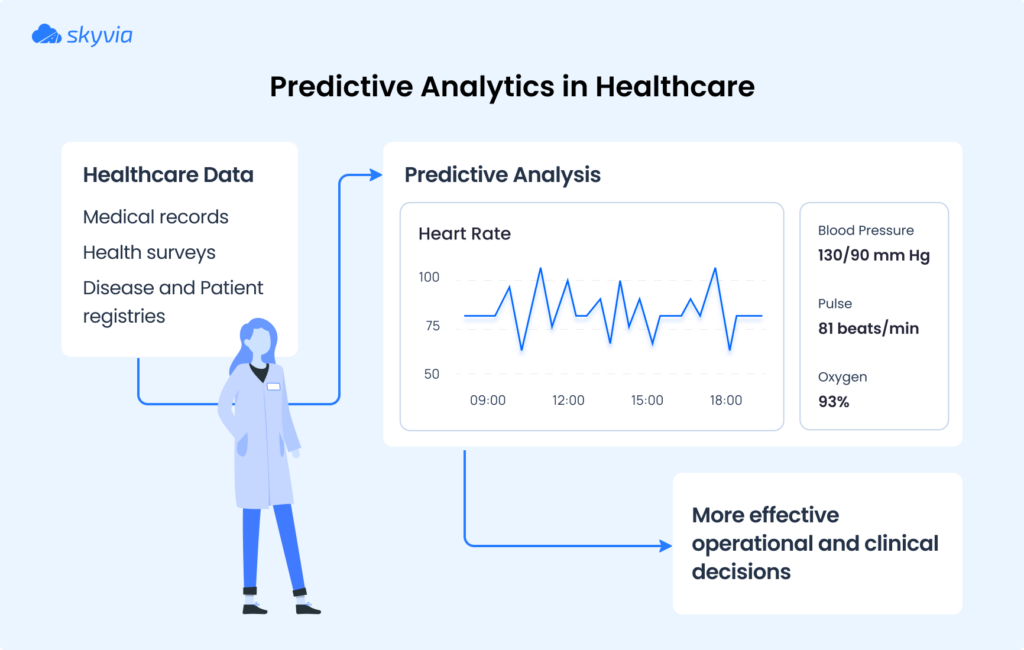
Expansion of IoT
The Internet of Medical Things (IoMT) is the fastest-growing sector in healthcare. It comprises smart blood pressure devices, fitness watches, ECG monitors, and other devices.
With data integration tools, data from IoMT is transferred to a centralized storage. Such an approach assists researchers in assessing treatment effectiveness. Also, consolidated medical data enhances advanced analytics, which helps identify national public health trends. This information can also be used to apply changes in the industry.
Conclusion
The healthcare sector has always been open to new technological advancements. However, the situation with data integration solutions was different until recently. The main concern related to the lack of standardization and interoperability issues.
Luckily, data integration is widely adopted across medical institutions nowadays. This became possible due to data encryption, privacy regulations, and interoperability standards. Modern data integration platforms, such as Skyvia, have further facilitated the process. Feel free to try a fully-featured version of Skyvia at no cost with a freemium tier.
FAQs
Data integration in healthcare combines data from different healthcare systems. These include but are not limited to EHR (Electronic Health Records) systems with individual patient records, broader health information systems (HIS), and medical devices. The main objective of healthcare data integration is to provide a holistic view of each patient. This, in turn, helps medical workers to improve patient care and decision-making.
The most tangible challenges associated with the healthcare data integration are:
– Data privacy concerns
– Interoperability issues
– Cost and complexity of the integration systems
Bringing data from dispersed sources together enables healthcare providers to offer more personalized and efficient care to their patients. This is possible due to a comprehensive view of each patient and real-time access to the most recent data.
The most commonly used practices for integrating data in the healthcare sectors are the following:
– Outline the objectives for which data integration is needed.
– Take advantage of modern cloud-based solutions and APIs.
– Train your team on how to use electronic systems.
– Inform your personnel about the national regulatory standards for data processing.
– Use analytic tools to derive patterns and make predictions based on medical data.
– Make sure that role-based access to patient data is adopted in your healthcare institution.
